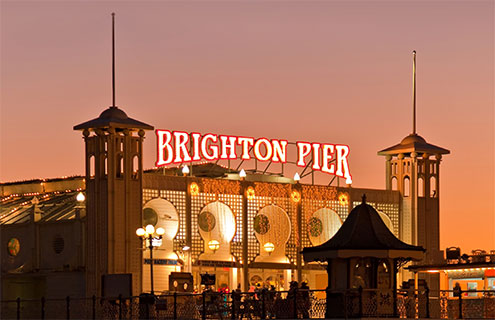The (not so) sunny seaside resort of Brighton was the backdrop for the 2013 Airmic conference. While the weather may not have been something to shout about, the association’s 50th anniversary certainly was.
The (not so) sunny seaside resort of Brighton was the backdrop for the 2013 Airmic conference. While the weather may not have been something to shout about, the association’s 50th anniversary certainly was.
Airmic is the result of a meeting between 22 risk managers back in 1963. Since then, the association has helped to support those responsible for risk management and insurance in their own firms by providing research, training and networking.
The Airmic Forum, chaired by Anthony Hilton, financial editor of the Evening Standard, was a well-attended panel during the three-day event as industry experts discussed current issues in today’s insurance market.
The panel was made up of John Doyle of AIG Property Casualty; Steve Hearn of Willis Group; Thomas Hürlimann of Zurich; Stephen McGill of Aon Risk Solutions; and Vincent Vandendael of Lloyd’s.
Hilton kicked off the debate with a discussion on current market structure rates. For a reinsurance perspective, he asked Hürlimann if rates were being moved up or if Zurich were struggling for business.
Hürlimann explained that looking back after 9/11, rates have gone up strongly all over the world, and that since Q4 2008, Zurich has never had a quarter with a negative rate. From this evidence Hürlimann feels that, after years of chopping and changing between hard and soft markets, “suddenly the market has more or less stabilised”.
Hilton went on to highlight the amount of excess capital currently in the market, with estimates at of up to $60 to 70 billion.
Vandendael said: “Fortunately, there is a lot of [new] capital around and there is more capital coming in, combined with low interest rates, so therefore low investment income. [Also] governments keep printing money to keep the interest rates low in order to boost the economy.”
Hilton then steered the conversation towards the types of new alternative sources of capital that are infiltrating the market, asking McGill if they could potentially lead to a hardening of the market.
McGill questioned whether the industry would ever witness a hard market like that of the past, as the peaks and troughs of the markets have largely evened out. If a hard market does emerge it tends to be very short lived.
McGill also highlighted a very interesting “trend of convergence” that he sees emerging in the industry as third-party capital enters the reinsurance industry in a way that he believes could be “quite profound”.
He said: “[The] third-party capital is measured in trillions not billions, and it comes amongst other things from pension funds. It is going to be interesting to see what that capital does.”
Hilton moved on to the subject of market innovation, explaining that clients’ business models are currently changing fundamentally due to a number of factors, including different supply chains, the use of technology, and the emphasis that is being put on brands and reputation.
“Big companies can now insure much less of their risk map than they have ever been able to in the past, because they have moved on and the insurance industry has perhaps not fully kept pace with them,” said Hilton.
Hilton then questioned whether the different parts of the industry are doing enough to keep up with the changes in the world, asking Hearn whether insurance brokers are driving the innovation process as hard as they should be.
Hearn admitted that brokers, and in fact all other stakeholders involved in innovation aren’t “collectively doing enough to drive an agenda”.
“Innovation works best [when] you have a client, carrier, broker, and a regulatory framework that enables innovation to happen and I think that one of the challenges that we’ve had in recent years is the increasingly complex regulatory world.”
McGill added that the industry is not keeping up with the pace of innovation or the pace of change.
He said: “It’s difficult to bring an innovation culture into an organisation that can drive results. When you think about big data, the data mining that is going on today is so profound that keeping pace with it is challenging.”
“But if [firms] can keep pace with it and actually mine it effectively, I think it presents huge competitive advantages for clients, for brokers, and for underwriters.”
Hearn concluded by again highlighting the current regulatory framework, which he believes makes innovation and the possibility of any kind of breakthrough very difficult.
Hürlimann agreed with Hearn, explaining that regulators aren’t helping the current situation and could be accused of making it more difficult for clients, firms and brokers alike.





